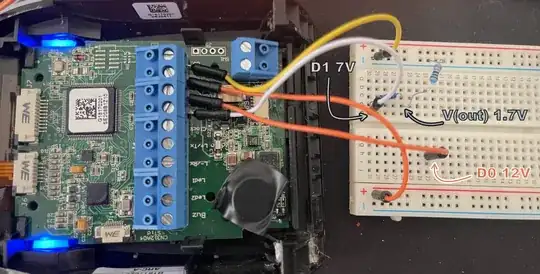I'm attempting to use a 12 V Wiegand reader with a 3.3 V microcontroller. To drop the voltage from 12 V to a safer level for my microcontroller, I decided to employ a voltage divider. Specifically, I used a 10 kΩ resistor in series with a 3.3 kΩ resistor.
However, upon implementing this voltage divider and connecting it to the microcontroller's pins D0 and D1, I noticed some unexpected behavior. The output voltage across the divider doesn't appear to be around 3.3 V as anticipated. Instead, I'm measuring approximately 1.75 V. Furthermore, the voltage coming from the reader that is connected to the input side of the voltage divider, which should be 12 V, has also changed. It's now reading around 7 V.
Edit: As Justme stated, my reader (ARC-A from STid) probably has an open-collector output. I'm measuring 12 V on D0 and D1. There are 10 kΩ internal pull-ups between D0, D1, and Vin.
When I recalculate my divider after changing the R1 value to 20 kΩ (10 kΩ internal pull-up + my 10 kΩ resistor), instead of 10 kΩ, I find that my voltage divider should output 1.7V. This explains why I didn't get my desired 3.3V.
